Natural Log Furniture Handcrafted Luxury for Your Living Room
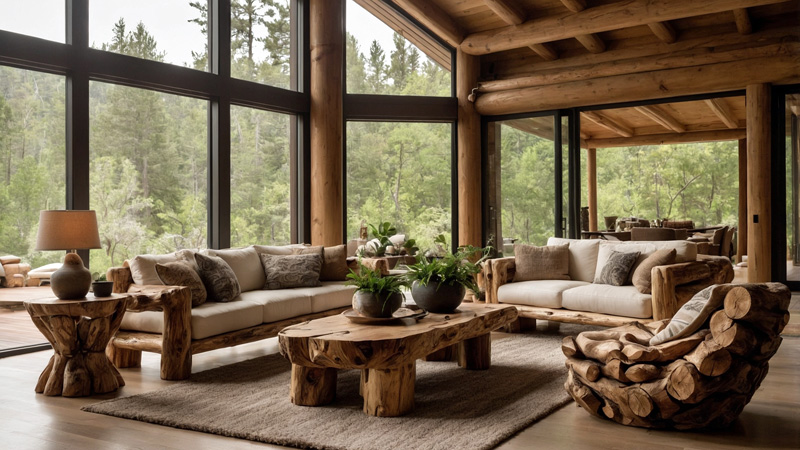
Contents
- Introduction
- Overview: Why Natural Log Furniture Stands Out
- Tip 1: Start with a Statement Piece
- Tip 2: Mix and Match Textures
- Tip 3: Play with Lighting
- Lighting Techniques for Log Furniture
- Tip 4: Keep It Balanced
- Tip 5: Add Greenery
- Tip 6: Personalise with Accessories
- Tip 7: Embrace Minimalism
- Tip 8: Consider the Layout
- Tip 9: Maintain Your Furniture
- Tip 10: Invest in Quality
- Conclusion
Introduction
In an era where homes are more than just shelters—they are reflections of personal values, lifestyle choices, and a longing for authenticity—natural log furniture emerges as a timeless solution for transforming living rooms into havens of warmth and sophistication. Modern interior design trends increasingly lean toward “biophilic design,” a concept that emphasizes humanity’s innate connection to nature. Natural log furniture, with its raw beauty, organic textures, and earthy tones, perfectly embodies this trend. It is not merely a functional addition to a space but a narrative piece, carrying stories of forests, craftsmanship, and sustainable practices. Whether your decor leans minimalist, bohemian, or traditional, log furniture adapts, elevates, and anchors a room, making it feel both lived-in and luxurious. This guide delves into why log furniture matters, how to integrate it seamlessly, and how to ensure it becomes a cherished part of your home for generations.
Overview: Why Natural Log Furniture Stands Out
Natural log furniture is more than a design choice—it is an investment in quality, sustainability, and timelessness. Here’s why it remains a coveted option for discerning homeowners:
- Timeless Appeal: Unlike fleeting trends that fade with seasons, log furniture transcends style cycles. Its rugged elegance complements mid-century modern sofas, bohemian tapestries, and even sleek, contemporary layouts. A handcrafted log coffee table, for example, can transition from a 1970s cabin-inspired room to a 2020s minimalist loft without losing its charm. Its beauty lies in its ability to evolve with changing decor, making it a lifelong companion.
- Sustainability: In an age of environmental consciousness, log furniture shines as an eco-friendly choice. Reputable artisans source wood from responsibly managed forests, often certified by organizations like the Forest Stewardship Council (FSC). Many craftsmen use low-VOC finishes and avoid harmful chemicals, ensuring the furniture is safe for both your home and the planet. This commitment to sustainability turns each piece into a statement of environmental responsibility.
- Durability: Unlike mass-produced furniture made from particleboard or composite materials, natural log furniture is built to endure. Hardwoods like oak, walnut, and cedar, known for their density and resistance to wear, form the backbone of these pieces. Over time, instead of deteriorating, log furniture develops a rich patina—a soft, aged glow that adds character. A well-cared-for log table, for instance, can last for decades, becoming a family heirloom passed down through generations.
Tip 1: Start with a Statement Piece
A statement piece acts as the “north star” of your living room, guiding the entire design scheme. It captures attention, sets the mood, and creates a focal point around which other elements revolve.
How to Choose the Right Statement Piece
- Scale Matters: Measure your room’s dimensions before selecting a statement piece. For a small living room (under 250 sq ft), opt for a medium-sized log coffee table or a compact log bookshelf. In larger spaces (over 400 sq ft), a chunky log sofa frame or a grand log fireplace mantel can command attention without feeling overwhelming.
- Function First: A statement piece should blend beauty with utility. A log coffee table with hidden drawers keeps remotes and coasters organized; a log bookshelf with built-in lighting showcases your favorite reads and illuminates the room.
- Align with Your Aesthetic:
- For minimalist spaces: Choose a log piece with clean lines, like a sleek live-edge console table.
- For bohemian vibes: Opt for a twisted log chair with irregular edges, pairing it with vibrant textiles.
- For traditional decor: A carved log sideboard with intricate detailing complements classic patterns and rich fabrics.
Example: A 3-foot-wide log dining table with a live edge (where the natural contour of the tree trunk remains) becomes the heart of an open-concept living room. Its rough-hewn surface contrasts with polished floors, while its sturdy legs ground the space, inviting family and guests to gather around.
Tip 2: Mix and Match Textures
The ruggedness of log furniture thrives when balanced with softer, more varied textures. This interplay creates depth, making the room feel dynamic yet cohesive.
Strategies for Texture Harmony
- Layer Soft Furnishings: Drape a chunky knit throw over a log armchair, or add plush velvet cushions in muted greens or burnt oranges to a log sofa. The contrast between rough wood and smooth fabric softens the room’s aesthetic.
- Incorporate Natural Fibers: A jute rug under a log coffee table adds a rustic touch, while a sheepskin rug draped over a log bench introduces warmth. Woven baskets for storage, placed beside a log shelf, enhance the organic feel.
- Blend Modern Materials:
- A log table with a glass top preserves the wood’s beauty while adding a sleek, contemporary edge.
- Metal accents—such as iron candle holders on a log side table or brass hardware on a log cabinet—introduce industrial chic.
- Pro Tip: Stick to 3-4 textures per room to avoid chaos. For example: log wood (base) + wool (cushions) + glass (tabletop) + jute (rug) = a balanced, inviting space.
Tip 3: Play with Lighting
Lighting is the unsung hero that enhances the natural allure of log furniture, highlighting its grain, knots, and color variations.
Lighting Techniques for Log Furniture
- Warm-Toned Bulbs: LED bulbs with a color temperature of 2700K-3000K (soft white to warm white) bring out the amber and chestnut hues in wood, creating a cozy, cabin-like ambiance. Avoid cool white bulbs (4000K+), which can make wood look dull or gray.
- Accent Lighting: Install recessed spotlights above a log bookshelf to showcase its carvings, or tuck LED strip lights under a log coffee table to illuminate its base, making it appear to “float” in the room.
- Harness Natural Light: Position log furniture near large windows to let sunlight dance across its surface. Morning light accentuates the wood’s grain, while golden hour (late afternoon) casts warm shadows that emphasize its texture.
Example: A log reading nook, featuring a curved log chair, feels magical when paired with a brass floor lamp. The lamp’s warm glow highlights the chair’s rough edges, while sunlight streaming through a nearby window brings out the wood’s natural patterns—perfect for curling up with a book.
Tip 4: Keep It Balanced
Overloading a room with log furniture can make it feel heavy or monotonous. Balance ensures each piece has room to shine while contributing to a unified look.
Keys to Balanced Design
- Mix Materials Strategically: Pair a log dining set with upholstered chairs in linen or leather to break up the wood’s density. A log TV stand looks striking next to a metal media console, creating visual contrast.
- Stick to a Neutral Palette: Walls painted in soft beiges, warm grays, or muted greens allow the wood’s natural colors to take center stage. Add pops of color (e.g., a blue vase, terracotta pottery) sparingly to avoid clashing.
- Prioritize Negative Space: Leave at least 18 inches between furniture pieces to ensure easy movement. A log sofa pushed against a wall, with 2 feet of space between it and a log coffee table, feels open and inviting.
Example: A log bookshelf flanking a fireplace works beautifully when balanced by a sleek, glass-front cabinet on the opposite wall. The wood adds warmth, while the glass introduces lightness, creating harmony.
Tip 5: Add Greenery
Plants and log furniture are natural allies—both celebrate nature, creating a space that feels alive and rejuvenating.
Plant Selection & Placement
- Low-Maintenance Options:
- Snake plants: Thrive in low light, making them ideal for corners near log shelves.
- Pothos: Trailing vines soften the edges of log mantels or bookshelves.
- Fiddle-leaf figs: Their large, glossy leaves complement the height of tall log bookcases.
- Planters That Complement:
- Terracotta pots: Their earthy tones echo log wood’s warmth.
- Woven baskets: Add texture when housing plants on log side tables.
- Concrete planters: Introduce a modern twist beside a rustic log bench.
- Strategic Placement: A small succulent arrangement on a log coffee table adds a fresh touch, while a tall palm in a corner softens the bulk of a large log cabinet.
Pro Tip: Match plant size to furniture scale. A tiny cactus looks lost on a large log dining table, but a lush fern in a 12-inch pot feels just right.
Tip 6: Personalise with Accessories
Accessories infuse personality into a room, turning log furniture from “generic” to “yours.”
Accessory Ideas for Log Furniture
- Artwork: Hang landscape paintings (featuring forests or mountains) above a log sofa to reinforce the natural theme. Black-and-white family photos in wooden frames look charming on a log side table.
- Decorative Objects:
- Hand-thrown ceramic bowls, placed on a log dining table, add artisanal flair.
- Vintage brass candlesticks, lit during evenings, cast a warm glow on log surfaces.
- A collection of smooth river rocks, displayed on a log shelf, connects to the wood’s natural origins.
- Books & Magazines: Stack coffee table books on design, nature, or travel on a log ottoman—they double as conversation starters and decor.
Example: A log console table in an entryway (adjacent to the living room) feels personal with a framed photo of your family, a small potted rosemary plant, and a vintage leather journal—each item telling a story.
Tip 7: Embrace Minimalism
Minimalism and log furniture pair beautifully, as the wood’s natural beauty needs little adornment to make an impact.
Minimalist Principles for Log Furniture
- Declutter Surfaces: A log coffee table looks best with 1-2 items (e.g., a vase, a stack of 3 books) rather than a jumble of knickknacks.
- Choose Quality Over Quantity: Invest in one standout log piece (e.g., a handcrafted log bed frame) instead of filling the room with smaller, less meaningful items.
- Let the Wood Speak: A single log bench, placed against a white wall, becomes a striking focal point—no additional decor needed.
Example: A minimalist living room features a log sofa, a slim log coffee table, and a single floor lamp. The lack of clutter allows the sofa’s natural grain and the table’s live edge to take center stage, creating a serene, uncluttered space.
Tip 8: Consider the Layout
A well-planned layout ensures log furniture is both functional and visually pleasing, enhancing how you use and experience the room.
Layout Strategies
- Create Functional Zones:
- A seating zone: Arrange a log sofa, two log armchairs, and a coffee table in a U-shape to encourage conversation.
- A reading nook: Tuck a log chair and a small side table near a window, with a floor lamp for task lighting.
- Ensure Flow: Leave 30 inches of space in high-traffic areas (e.g., between the living room and dining area) to prevent bottlenecks.
- Highlight Focal Points: Arrange log furniture to frame existing focal points—a fireplace, large window, or statement artwork. A log mantel above a fireplace, flanked by log bookcases, draws the eye to the room’s center.
Example: In a rectangular living room, position a log sectional along one long wall, with a log coffee table in the middle. This setup maximizes seating while keeping the space open, with clear pathways to the kitchen or hallway.
Tip 9: Maintain Your Furniture
Proper care ensures log furniture retains its beauty and durability for years to come.
Maintenance Essentials
- Regular Cleaning: Dust weekly with a soft, dry cloth to prevent buildup. For deeper cleans, wipe with a slightly damp cloth (avoid soaking the wood) and dry immediately.
- Polishing & Protecting:
- Use natural wood polish (e.g., beeswax or orange oil) every 3-6 months to nourish the wood and restore its shine.
- Apply felt pads to the bottom of log furniture legs to prevent scratches on floors.
- Guard Against Damage:
- Keep furniture away from direct sunlight to avoid fading—use curtains or blinds during peak hours.
- Use coasters for drinks and placemats for hot dishes to prevent water rings or heat marks.
- Maintain consistent humidity (40-60%) to prevent wood from warping—use a humidifier in dry climates.
Pro Tip: For stubborn stains (e.g., wine or coffee), mix equal parts water and white vinegar, dab gently with a cloth, and dry immediately. Avoid harsh chemicals like bleach, which can damage the wood.
Tip 10: Invest in Quality
Quality log furniture is a long-term investment, offering value that cheap alternatives cannot match.
Signs of Quality Craftsmanship
- Wood Selection: Hardwoods (oak, maple, walnut) are more durable than softwoods (pine, fir) and develop a richer patina. Ask artisans about the wood’s origin—reputable sources matter.
- Construction: Look for joinery (e.g., mortise-and-tenon) instead of nails or glue, which are stronger and longer-lasting. Hand-sanded surfaces feel smooth to the touch, with no rough edges.
- Finish: A high-quality finish (e.g., natural oil, water-based polyurethane) protects the wood while letting its grain show through. It should feel smooth and even, with no drips or bubbles.
Why It’s Worth It: A 2,000 handcrafted log dining table may cost more upfront than a 500 mass-produced one, but it will last 50+ years, outliving multiple cheaper replacements. Over time, it becomes a family heirloom, holding memories of meals, gatherings, and everyday moments.
Conclusion
Natural log furniture is more than a design trend—it is a celebration of nature, craftsmanship, and intentional living. By starting with a statement piece, balancing textures, playing with lighting, and adding personal touches, you can transform your living room into a space that feels warm, inviting, and uniquely yours. Its timeless appeal ensures it will adapt to changing styles, while its sustainability aligns with modern values of environmental responsibility. Whether you choose a single log coffee table or a full set, the key is to let the wood’s natural beauty shine—unforced, authentic, and full of character. Invest in quality, care for it mindfully, and watch as your log furniture becomes not just a part of your home, but a part of your story.


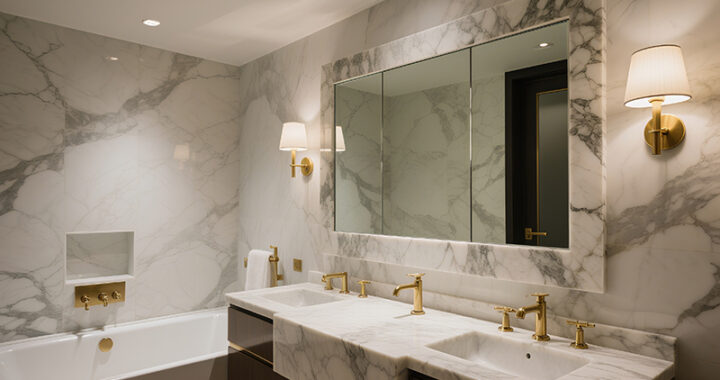 Best Luxury Bathroom Mirrors for a Stylish Touch
Best Luxury Bathroom Mirrors for a Stylish Touch 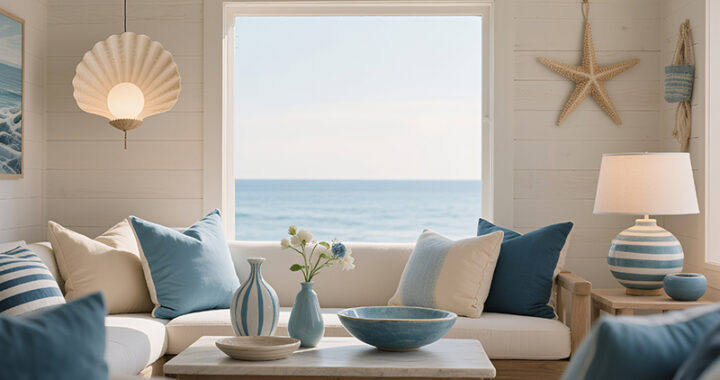 Luxury Coastal Home Decor Ideas: Elevate Your Beach House with Timeless Elegance
Luxury Coastal Home Decor Ideas: Elevate Your Beach House with Timeless Elegance 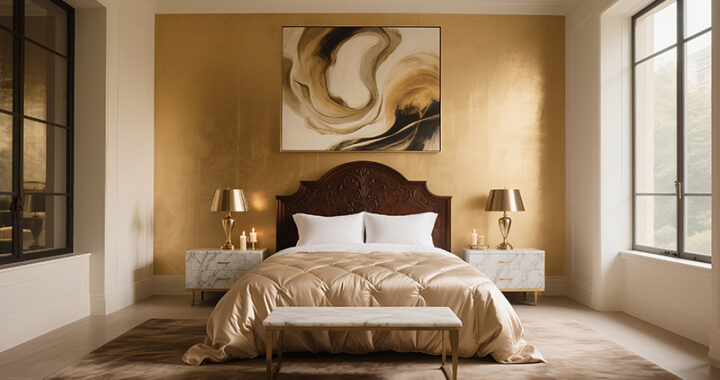 Home Decor Ideas to Make Your Home Feel Like a Luxury Hotel
Home Decor Ideas to Make Your Home Feel Like a Luxury Hotel 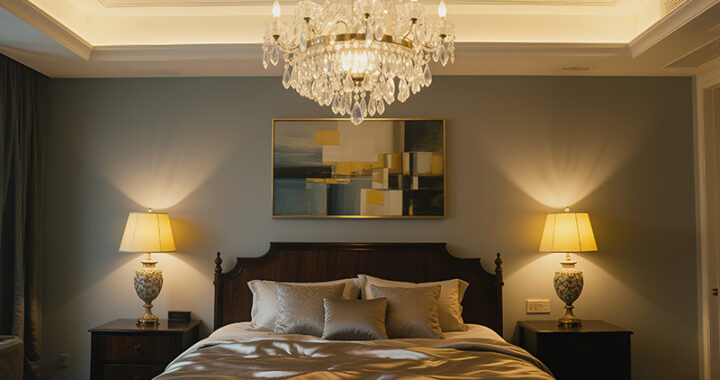 Best Luxury Accent Lighting for Every Room
Best Luxury Accent Lighting for Every Room 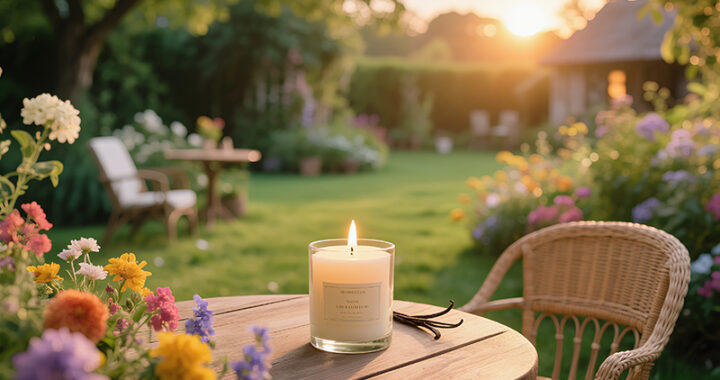 Best Luxury Candles for a Cozy and Elegant Home
Best Luxury Candles for a Cozy and Elegant Home 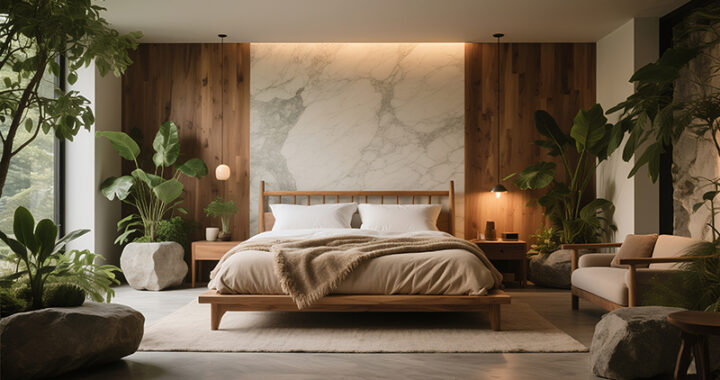 Best Luxury Bed Frames for a Stylish Bedroom
Best Luxury Bed Frames for a Stylish Bedroom